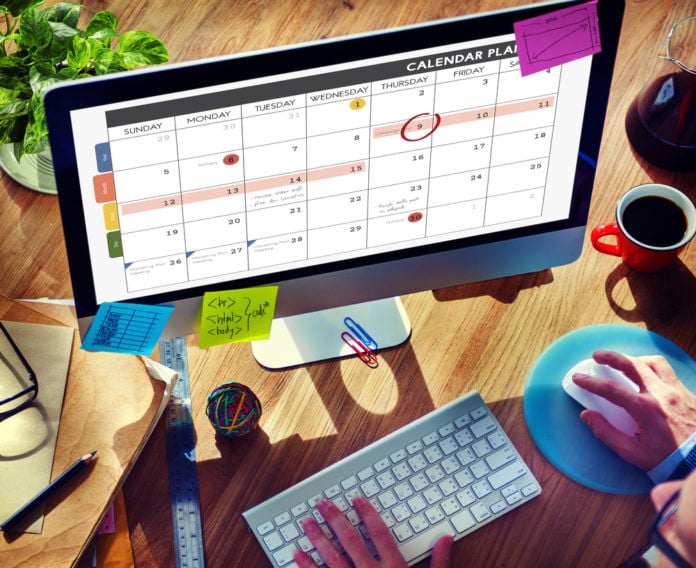
Welcome back to Joomag’s Content Calendar Checklist!
If you're pondering what to incorporate into your content calendar, we've crafted a checklist to guide your decision-making process. Your content calendar is essential for managing your digital publishing workflow effectively. Here's what it should include:
Essential Elements for Your Content Calendar
-
LABELS: have each step of your editorial process labeled (like brainstorming ideas, publication release days, ad campaign dates, etc.) so you know how long each process takes and can make adjustments accordingly.
-
TITLES: list the titles of your publications, blogs, and other promotional material so you don’t lose track of them when working on multiple projects.
-
COLOR-CODES: color-code calendar entries to convey structure and more easily distinguish between different stages of your editorial strategy.
-
ANALYTICS: include relevant analytics (like page views and average session durations) so you know what is and isn’t popular with your publications. Then use that valuable information to fine-tune your future content.
-
TRENDS: incorporate some trend research, like the best keywords for boosting your SEO. It’s a great way to know at a glance which keywords and phrases generate the most traffic for your publications.
-
LINKS: include links to online resources (like research articles and surveys) that you want to include in your publications. And once your content is finally published, be sure to link it to your calendar, too.
-
DETAIL: your content calendar won’t be that useful if it only contains snippets of information, like abbreviations or acronyms. It needs to include a complete record of your content history so as to avoid any possible confusion later on.
Pro Tips for Maximizing Your Content Calendar:
1. Start slow if you have to. Fill your calendar’s content on a monthly, weekly, and then daily basis. Pretty soon you’ll be calendaring your publishing strategy by the hour, like a pro!
2. If you’re active on multiple social media sites, a good idea is to create separate calendars for each of them. You’ll stay organized and won’t have to worry about stuffing a lot of information into one calendar.
3. Be flexible! Remember that not everything’s set in stone. Online publishing is exciting because things are always changing. Your calendar should reflect that and leave some space for any last-minute changes you may be anticipating (be it publication release dates, marketing efforts, or trends).
Tools for Creating an Effective Content Calendar
For those seeking professional calendaring services, Divvy HQ and CoSchedule offer robust features tailored to digital publishers. However, if you're in search of a cost-effective solution, Google Calendar stands out as an excellent option. It's free, facilitates easy team collaboration, and comes packed with features that align with the recommendations provided above. For a hands-on guide, consider exploring video tutorials on using Google Calendar efficiently.
Conclusion: The Power of Planning in Digital Publishing
A well-structured content calendar is the backbone of a successful digital publishing strategy. It not only organizes your workflow but also ensures your publishing efforts are aligned with your goals. Embrace planning with a comprehensive content calendar and watch your digital publications thrive.
FAQ
1. Why do I need a content calendar for digital publishing?
Answer: A content calendar streamlines your publishing process, ensuring tasks like brainstorming, publishing, and analyzing are organized and tracked. It helps you publish timely content and adapt strategies based on audience feedback and trends.
2. How does adding trends and analytics help?
Answer: Incorporating trends and analytics lets you tailor your content to what your audience prefers, based on real data. Trend research boosts SEO, while analytics guide content adjustments for better engagement.
3. Any quick tips for using a content calendar effectively?
Answer: Start broad and get more specific over time. Use separate calendars for different platforms to avoid clutter. Stay flexible to adapt to the dynamic nature of digital publishing. Tools like Divvy HQ, CoSchedule, or Google Calendar can significantly aid in organization and collaboration.


